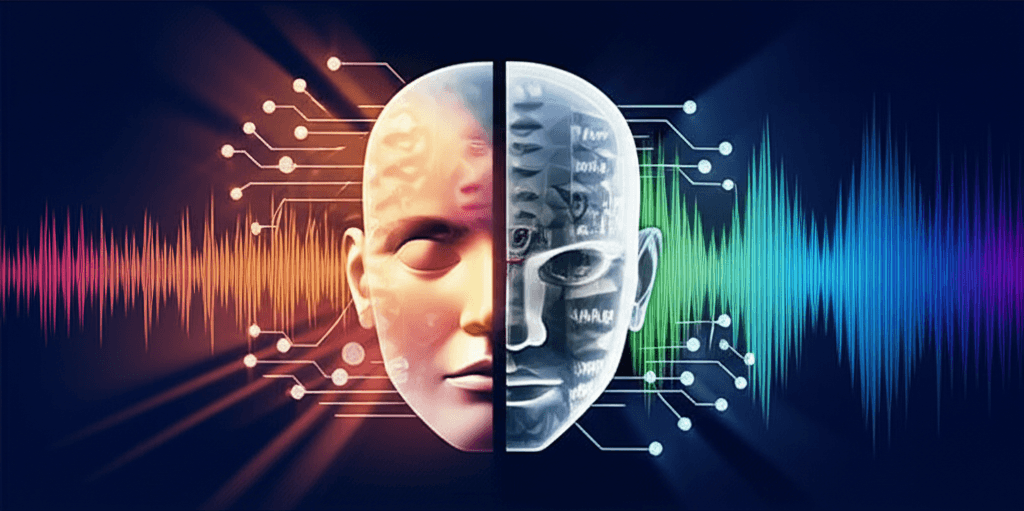Intel and LAION Empower AI to Gauge Nuanced Human Emotion Intensity
LAION and Intel unveil EmoNet, an open-source suite helping AI truly grasp the intensity of 40 human emotions.
June 20, 2025

In a significant step toward developing more emotionally intelligent artificial intelligence, the open-source research organization LAION and technology giant Intel have unveiled a new suite of tools designed to help AI systems recognize and measure the intensity of a wide spectrum of human emotions.[1] The project, called EmoNet, provides researchers with expertly annotated datasets and models to foster innovation in AI's understanding of nuanced emotional states from both facial expressions and vocal tones.[1] This collaboration addresses a critical gap in AI development, moving beyond basic emotion recognition to a more fine-grained analysis of 40 distinct emotion categories. The initiative aims to enhance human-AI interaction, making it more empathetic, productive, and thoughtful.[1]
At the core of the EmoNet project are two key benchmarks: EMONET-FACE for visual emotion recognition and EMONET-VOICE for speech-based emotion detection.[1] These benchmarks are built upon a detailed taxonomy of 40 emotions, a significant expansion from the limited emotional spectrums found in most existing datasets which often overlook subtle states like bitterness or fail to distinguish between similar feelings such as shame and embarrassment.[2][3] For the facial recognition component, LAION and Intel created three large-scale synthetic image datasets: EMONET-FACE BIG, with over 203,000 images for pre-training; EMONET-FACE BINARY, containing nearly 20,000 images with over 65,000 binary annotations from human experts for fine-tuning; and EMONET-FACE HQ, a high-quality evaluation set of 2,500 images with 10,000 continuous intensity ratings from psychology experts.[1][3] This tiered approach allows for robust model development and precise evaluation. The use of synthetic images is a crucial element, enabling the creation of a demographically diverse and privacy-preserving dataset.[1]
The initiative extends its comprehensive approach to the auditory domain with the EMONET-VOICE benchmark. This component features EmoNet-Voice Big, a massive pre-training dataset with over 4,500 hours of synthetic speech across 11 voices, four languages, and the same 40 emotion categories.[2] To complement this, EmoNet-Voice Bench offers a meticulously curated set of 12,600 high-quality audio samples with expert verification for fine-grained speech emotion recognition (SER).[2] A key innovation in this area is the development of BUD-E Whisper, a suite of models based on OpenAI's Whisper, which are specifically adapted for advanced emotion captioning.[1] These models don't just transcribe speech; they generate structured descriptions of the emotional tone and recognize non-lexical vocal bursts like sighs or laughter, providing a much deeper understanding of the emotional content of speech.[1] The synthetic generation of voice data, similar to the image datasets, ensures both privacy and diversity in the training material.[2]
The collaboration between LAION and Intel is not new, with a history of working together to optimize AI models and foster open-source innovation.[1] This project is part of a broader effort that includes the establishment of an AI/oneAPI Center of Excellence focused on developing BUD-E (Buddy for Understanding and Digital Empathy), an open-source, empathetic AI education assistant.[4] The goal of BUD-E is to provide personalized and emotionally intelligent learning experiences, particularly for children in developing nations, making advanced educational tools accessible on low-powered devices.[4] Intel's commitment to open standards is evident in this partnership, ensuring that the tools developed are hardware-agnostic and widely adoptable, thus democratizing access to emotionally intelligent AI.[1][4] By making these sophisticated datasets and models freely available, LAION and Intel are empowering the global research community to build and refine AI systems capable of more human-like emotional understanding.[1][3]
The introduction of the EmoNet suite holds significant implications for the future of artificial intelligence. By enabling AI to gauge not just the type of emotion but its intensity, the technology opens up new possibilities in a variety of fields. Applications could range from more sophisticated content moderation systems that can detect nuanced forms of harmful content to advanced mental health tools that can recognize subtle emotional cues. In human-computer interaction, this could lead to more natural and responsive virtual assistants, customer service bots, and educational companions that can adapt their behavior based on the user's emotional state.[5] However, the development also brings to the forefront the critical need for responsible innovation and a thorough consideration of ethical implications. The creators acknowledge the challenges, noting the variability in human emotional judgment and the limitations of inferring emotions from facial or vocal cues alone.[3] The open and transparent nature of the project is a deliberate step to encourage broad research and discussion on these complex issues, ensuring that the development of emotionally intelligent AI proceeds in a way that is both beneficial and ethically sound.[1][4]